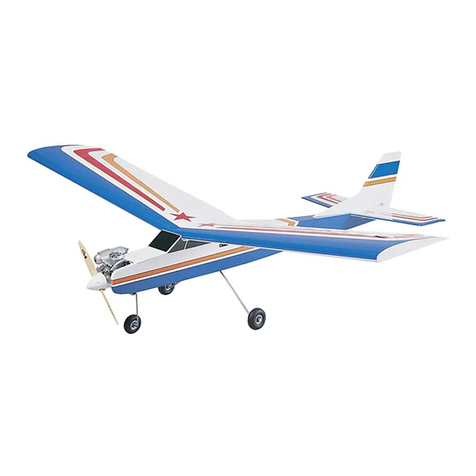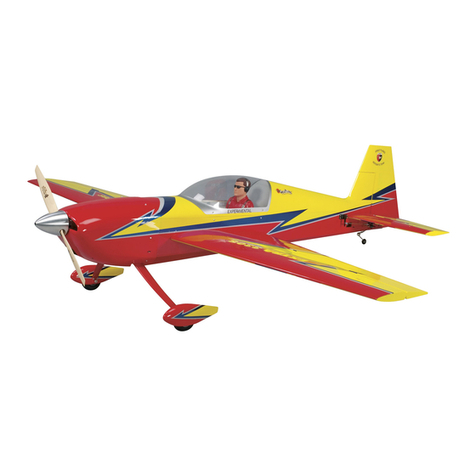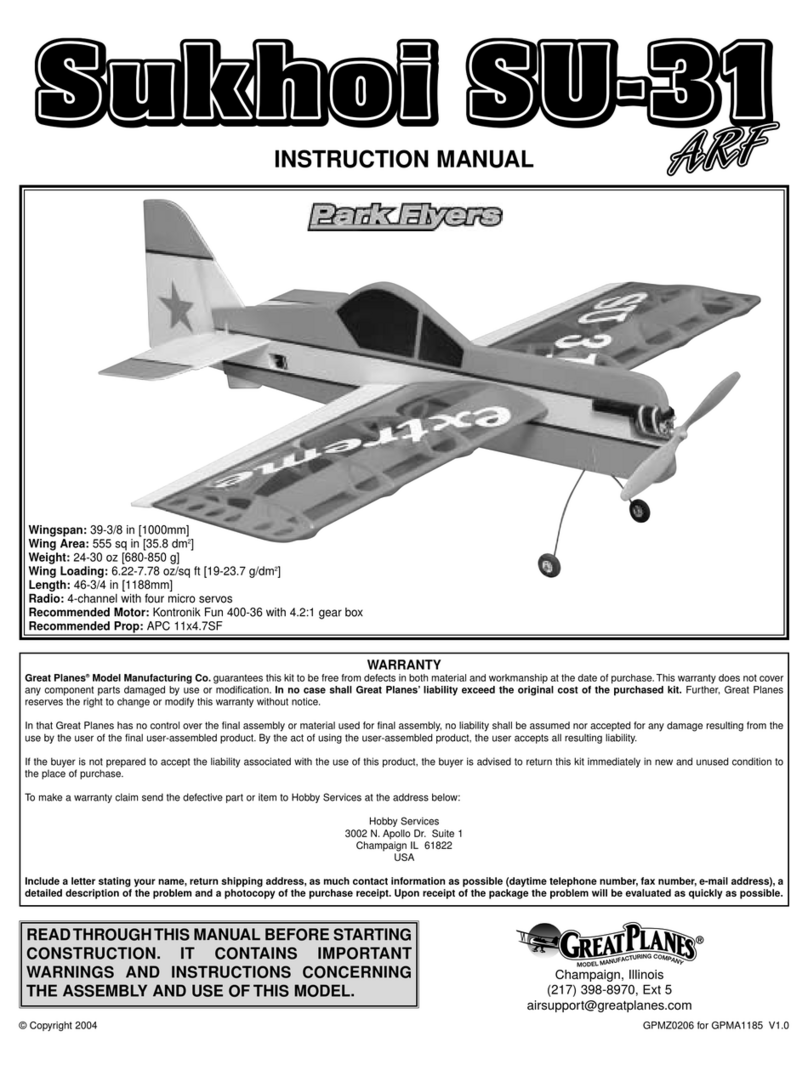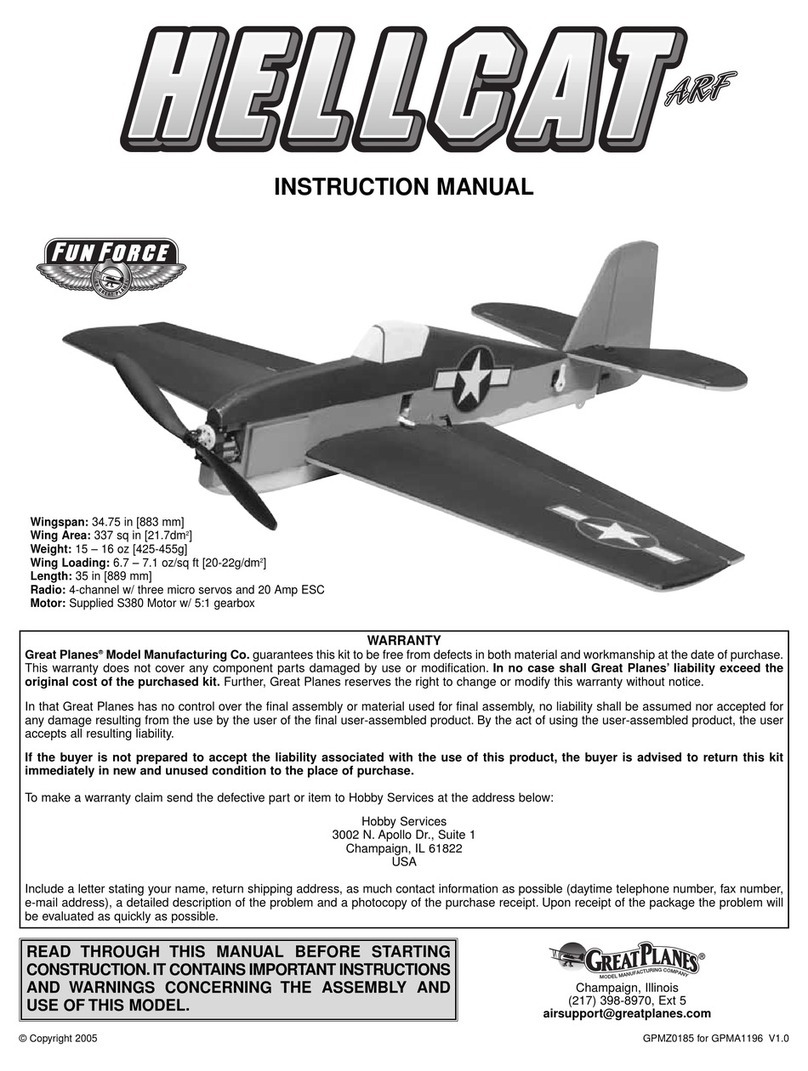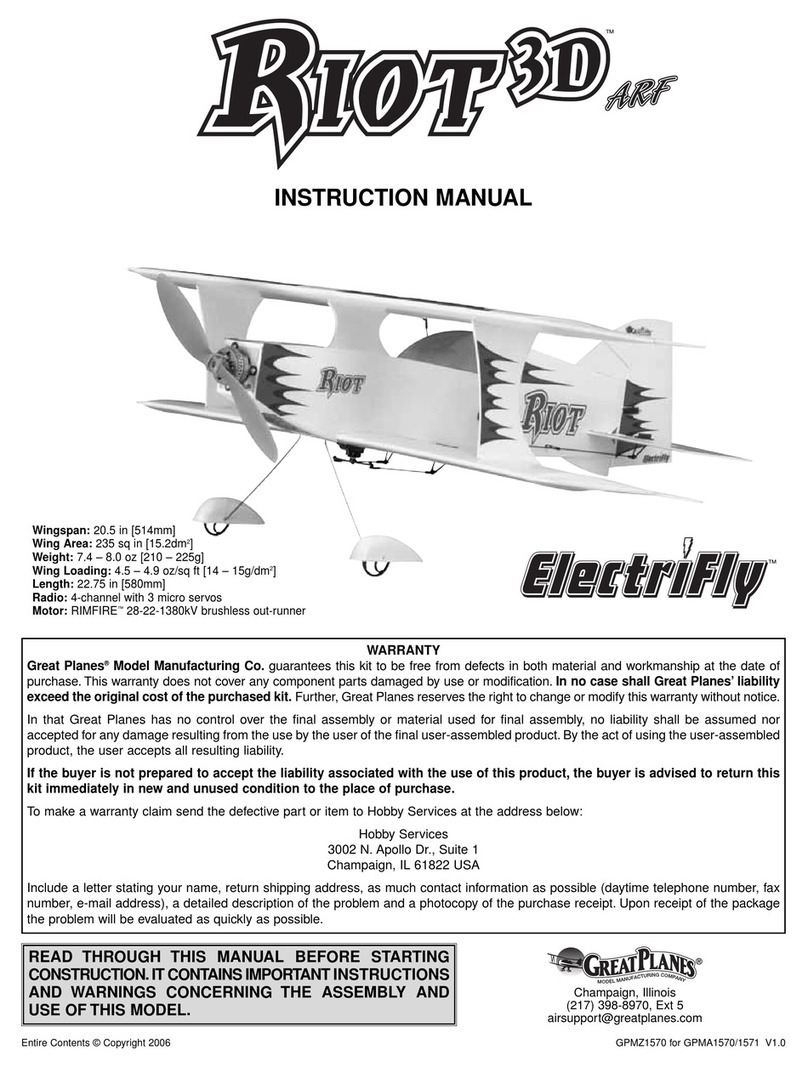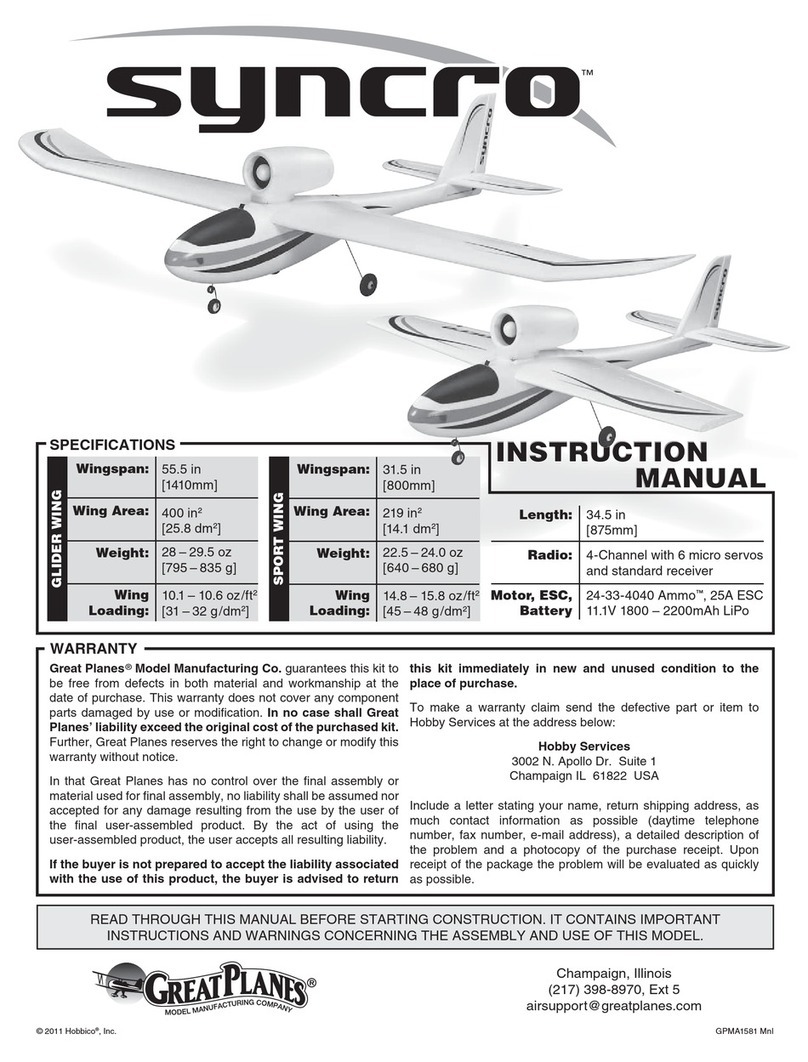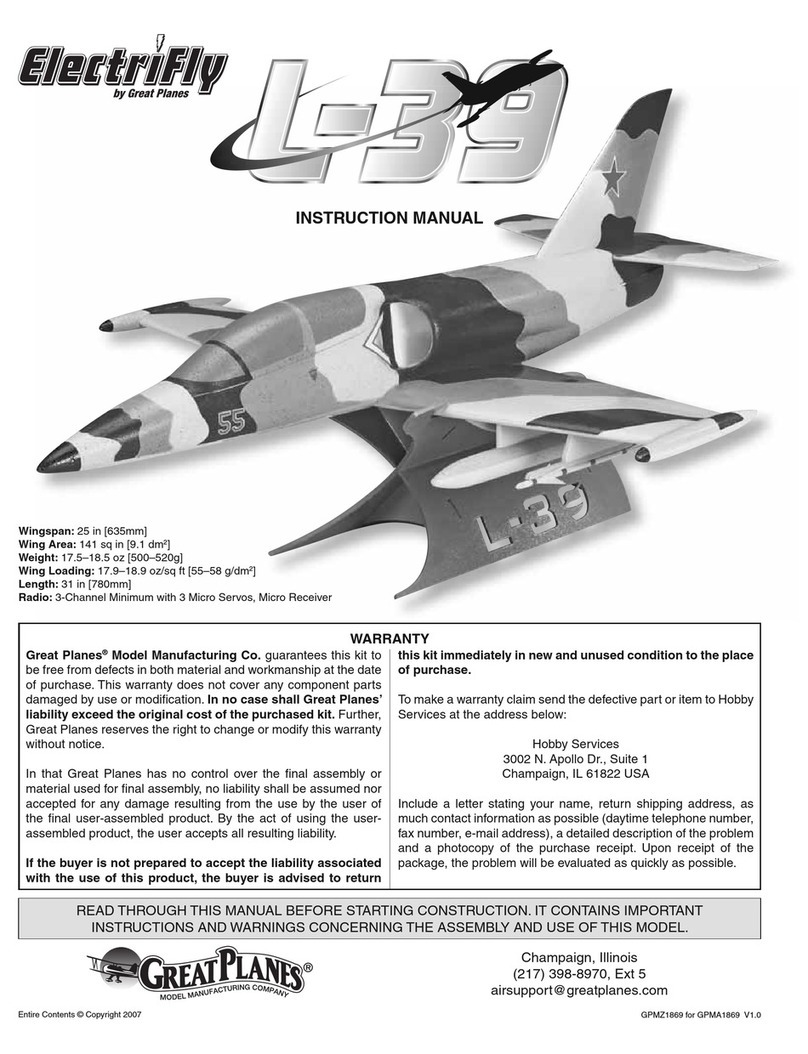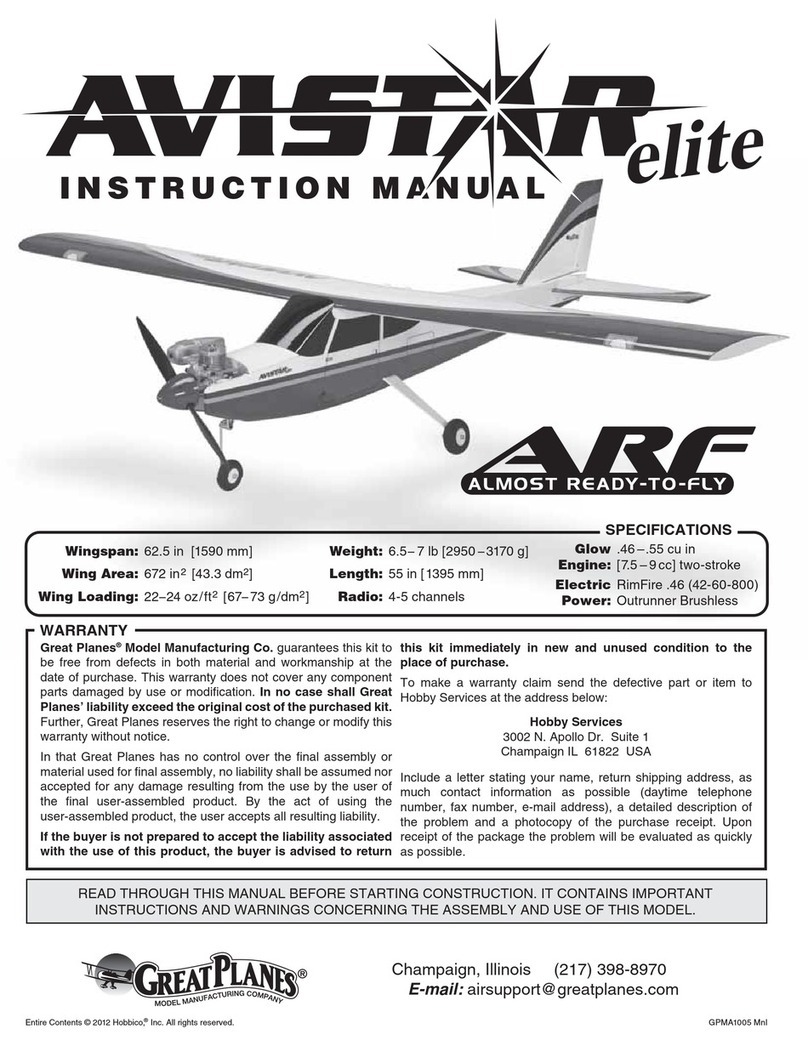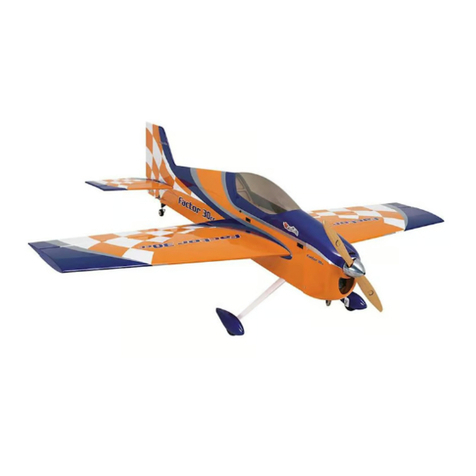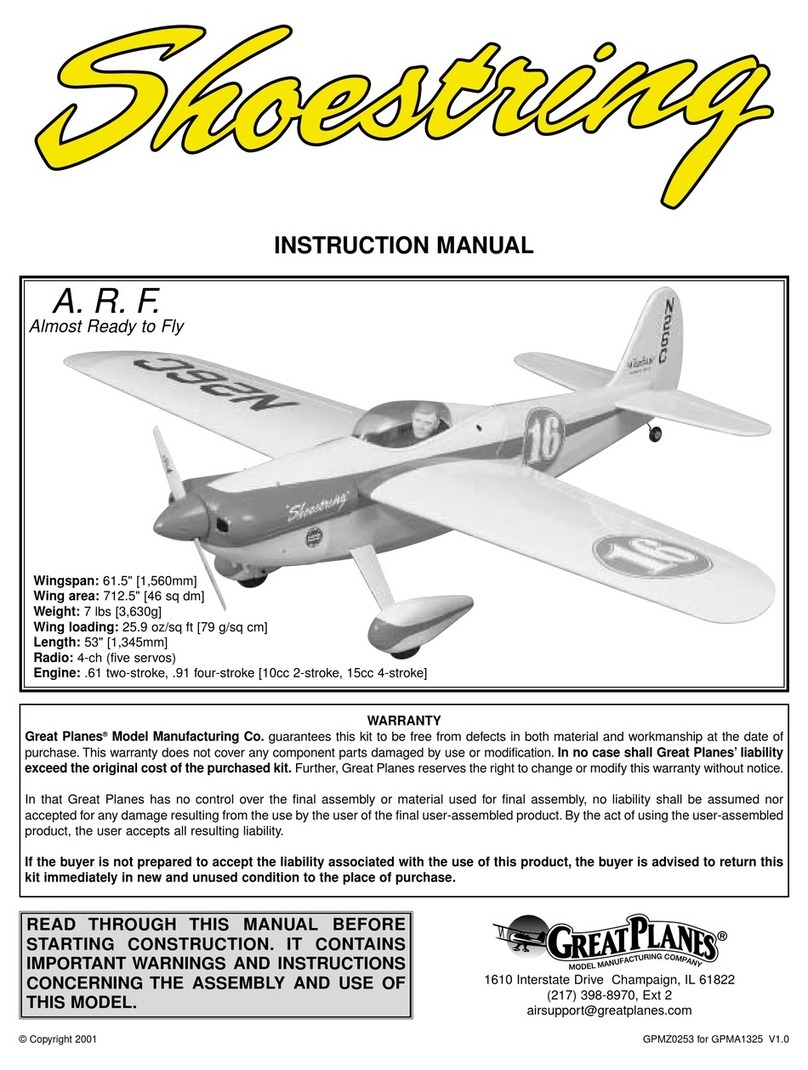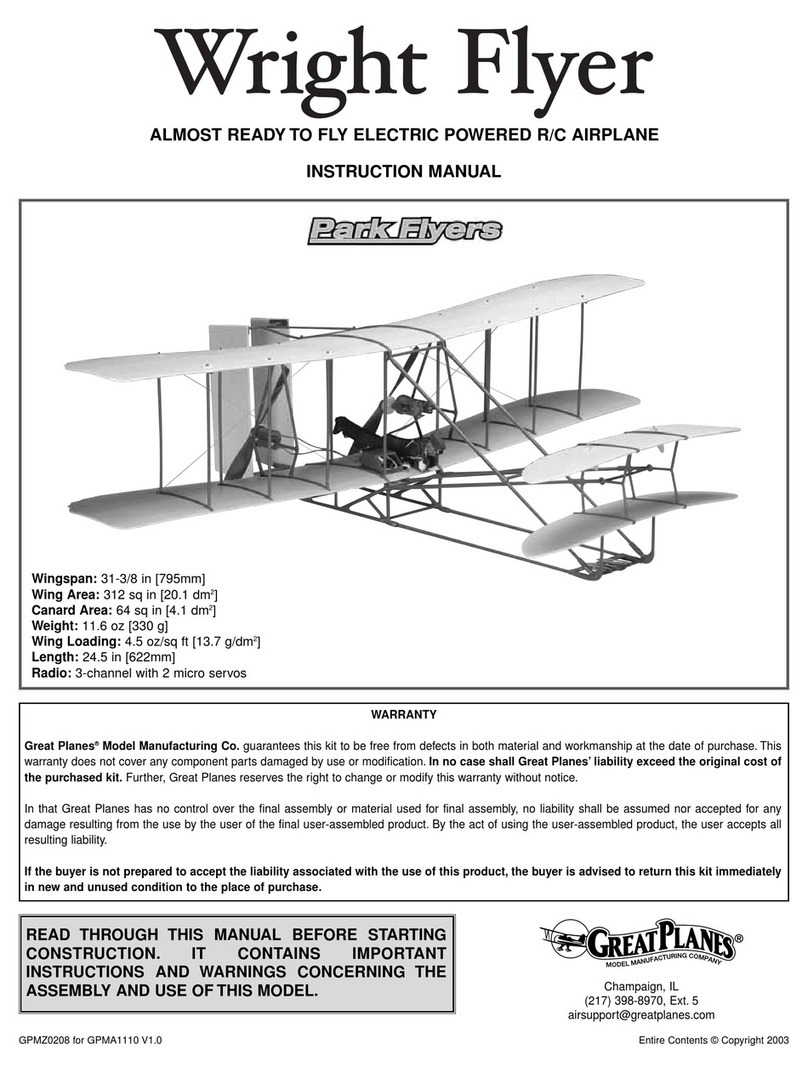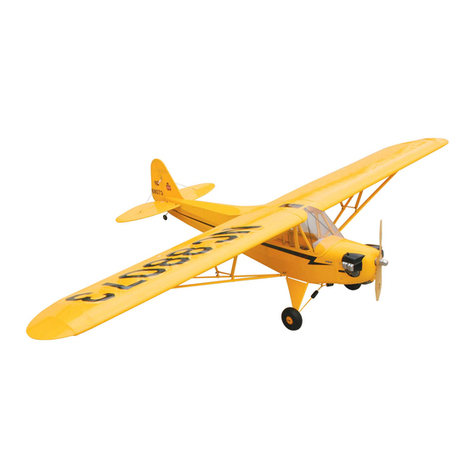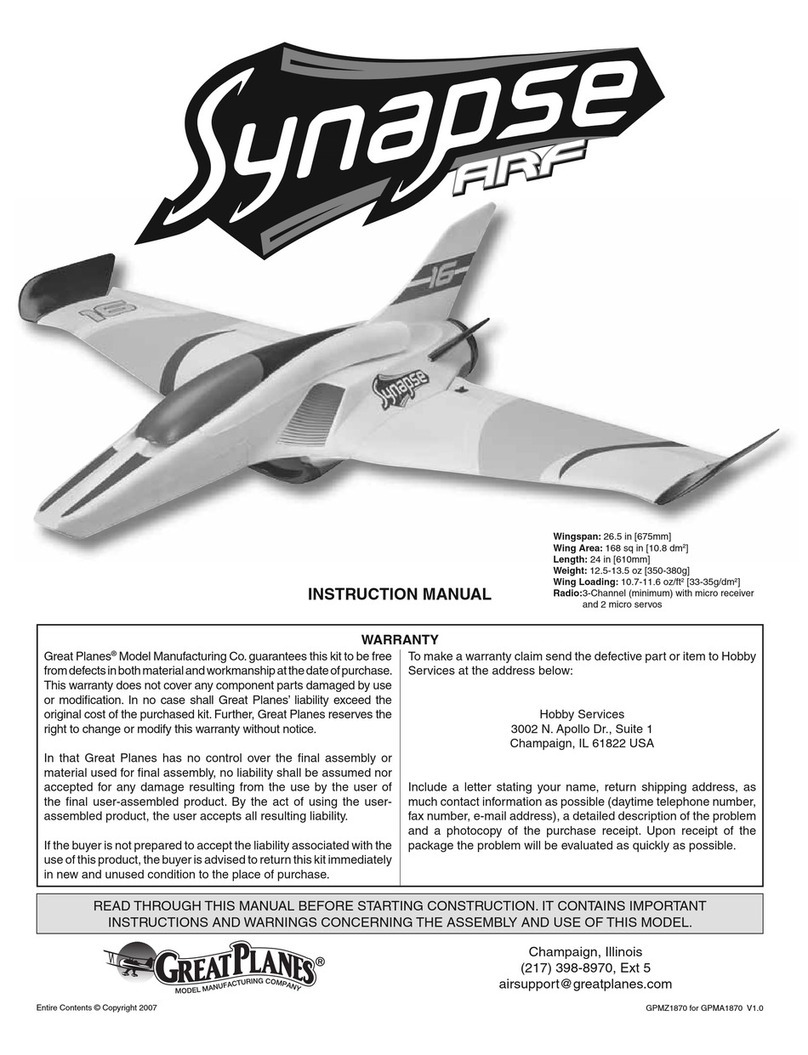
2
TABLE OF CONTENTS
INTRODUCTION...............................................................2
AMA ..................................................................................2
SAFETY PRECAUTIONS .................................................3
BATTERY CHARGER OPTIONS......................................3
ADDITIONAL ITEMS REQUIRED ....................................3
Hardware & Accessories..............................................3
Adhesives & Building Supplies.....................................3
Optional Supplies & Tools ............................................4
IMPORTANT BUILDING NOTES......................................4
COMMON ABBREVIATIONS ...........................................4
ORDERING REPLACEMENT PARTS..............................4
KIT INSPECTION..............................................................5
KIT CONTENTS................................................................5
PREPARATIONS...............................................................6
ASSEMBLETHE WING ....................................................6
Install the Ailerons........................................................6
ASSEMBLETHE FUSE....................................................7
Mount the Bottom Wing................................................7
Mount the Stab & Fin ...................................................7
RADIO INSTALLATION ....................................................8
Install the Motor & ESC................................................8
Install the Linkages ......................................................9
Install the Servos..........................................................9
FINISHTHE MODEL.......................................................11
Install the Middle Wing...............................................11
Install the Top Wing....................................................12
Install the Sub-Wing & Landing Gear.........................13
Install the Machine Gun & Dummy Engine ................14
Install the Cowl & Propeller........................................14
Install the Battery.......................................................14
Assemble the Pilot Figure..........................................15
GETTHE MODEL READYTO FLY.................................15
Check the Control Directions .....................................15
Set the Control Throws...............................................16
Balance the Model (C.G.)...........................................16
Balance the Model Laterally.......................................17
PREFLIGHT....................................................................17
IdentifyYour Model.....................................................17
Charge the Transmitter Batteries................................17
Balance the Propellers...............................................17
Proper Care ofYour Motor..........................................17
Ground Check............................................................17
Range Check .............................................................17
MOTOR & BATTERY SAFETY PRECAUTIONS............17
AMA SAFETY CODE (excerpts)....................................18
CHECK LIST...................................................................18
FLYING............................................................................19
Takeoff........................................................................19
Flight ..........................................................................19
Landing ......................................................................19
INTRODUCTION
High in the skies over war-torn Europe during WW1 lurked a
man and machine combination that struck terror in the hearts
and minds of the allied forces.The man–Baron Manfred Von
Richtofen; the machine–the Fokker DR-1. Together they
forged the legend of the bloody “Red Baron”!
The Fokker DR-1 is to this day, nearly a century after the
record-setting exploits of the “Red Baron,” one of the most
highly recognized airplanes in the world. Now you can have
this great looking and flying model as an electric, without the
mess and fuss of a glow-powered engine.
With today’s LiPo (Lithium-Polymer) batteries and micro
servos, small electrics have become very popular. Now
Great Planes brings you the Fokker DR-1 in a small, easy to
fly, ARF electric. So if you want to impress your glow-flying
buddies with an electric, the Great Planes Fokker DR-1 EP
ARF is just what you need.
For the latest technical updates to the Fokker DR-1 EP ARF,
visit the Great Planes web site at www.greatplanes.com.
Open the “Airplanes” link and select the Fokker DR-1 EP
ARF.IF there is new technical information or changes to this
model, a “tech notice” box will appear in the upper left corner
of the page.
AMA
WeurgeyoutojointheAMA(AcademyofModelAeronautics)
andalocalR/Cclub.TheAMAisthegoverning body of model
aviation and membership is required to fly at all AMA clubs.
Though joining the AMA provides many benefits, one of the
primary reasons to join is liability protection. Coverage is not
limited to flying at contests or on the club field.It even applies
to flying at public demonstrations and air shows. Failure to
comply with the Safety Code (excerpts printed in the back of
the manual) may endanger insurance coverage.Additionally,
training programs and instructors are available at AMA club
sites to help you get started the right way. There are over
2,500 AMA chartered clubs across the country. Contact the
AMA at the address or toll-free phone number below.
Academy of Model Aeronautics
5151 East Memorial Drive
Muncie, IN 47302-9252
Tele. (800) 435-9262
Fax (765) 741-0057
Or via the Internet at:
http://www.modelaircraft.org
IMPORTANT!! Two of the most important things you can do
to preserve the radio controlled aircraft hobby are to avoid
flying near full-scale aircraft and avoid flying near or over
groups of people.

